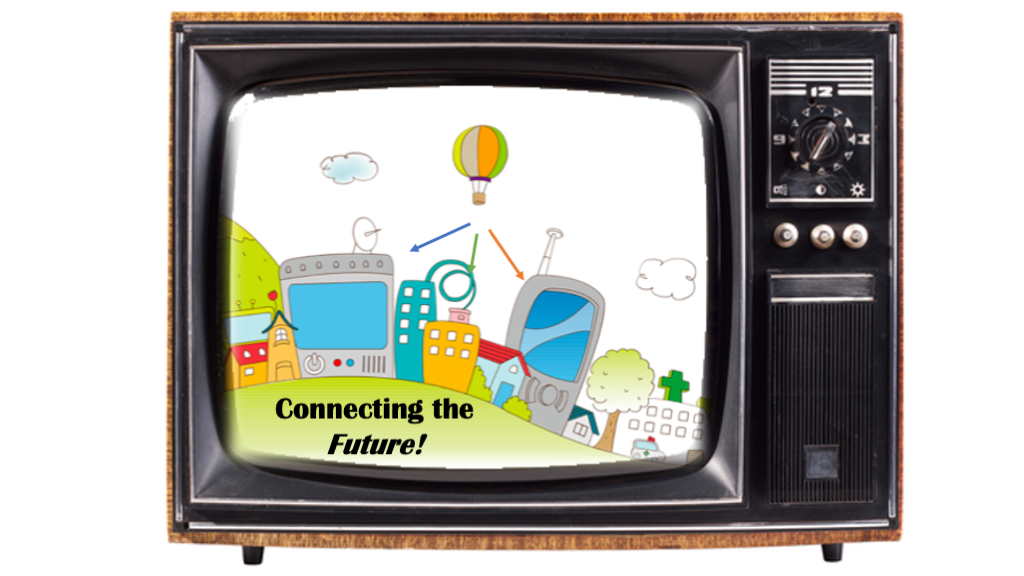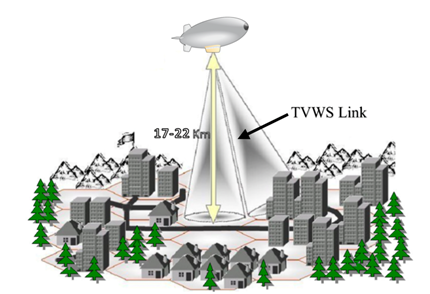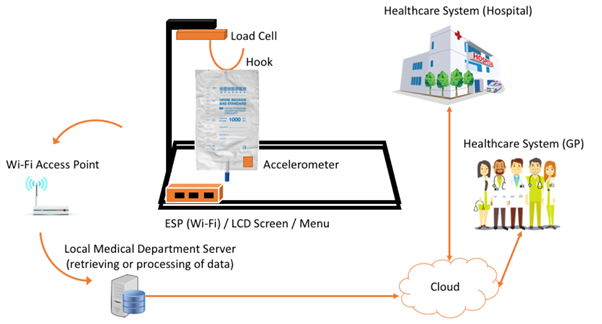
Theoretical and industrial advances in the telecommunications domain constitute a very important aspect of CERIDES research activities. Dr. Konstantinos Katzis and his team, since joining CERIDES in 2018, have been active in promoting an innovative telecommunications agenda. In particular:
Domain A – IoT Health
Theoretical Background:
Future communications envisage a plethora of wireless, connected, in many cases ‘smart’ devices that will communicate in real time with each other. This is referred to as the Internet of Things (IoT). IoT has been widely used in developing new, novel medical related applications such as smart wearable or implantable sensors paving the way towards the establishment of an integrated healthcare network infrastructure. This new architecture can revolutionize the way patients are monitored as well as the way they receive their treatment. CERIDES is currently working towards the characterisation of the network traffic generated by such IoT health-sensors when deployed in large numbers. The CERIDES team is also looking into the communication requirements of current and future mobile networks in order to support the operation of IoT-Health wearable devices. More specifically the team is looking into transmission characteristics and radio resource optimisation for IoT-Health use-case scenarios, as well as the safety and security associated with the operation of such devices.

Recent Publications:
Panagi and K. Katzis, “Towards 3-Lead Electrocardiogram Monitoring over LoRa: A Conceptual Design,” 2020 IEEE International Conference on Communications Workshops (ICC Workshops), Dublin, Ireland, 2020, pp. 1-5, doi: 10.1109/ICCWorkshops49005.2020.9145424.
Hadjichristofi, G. Varveris, K. Katzis, Assessing Trustworthiness of IoT-Health Devices in Hospital Environments, to be presented at the 2020 IEEE Eighth International Conference on Communications and Networking (ComNet) – October 2020
W. Jones and K. Katzis, Will TV White Spaces Increase Telehealth Capability?, 2018 13th IEEE Conference on Industrial Electronics and Applications (ICIEA), 31 May – 2 June 2018, Wuhan, China
W. Jones and K. Katzis, 5G and Wireless Body Area Networks, IEEE Wireless Communications and Networking Conference (WCNC) – Workshop: IoT-Health 2018, 15-18 April 2018, Barcelona, Spain
Katzis, Jones, R. W. and Despotou, G., The challenges of balancing safety and security in implantable medical devices., In: Unifying the Applications and Foundations of Biomedical and Health Informatics. Studies in Health Technology and Informatics, 226 . I O S Press, pp. 25-28.
W. Jones and K. Katzis, Cybersecurity and the Medical Device Product Development Lifecycle, In: Mantas, John and Hasman, Arie and Gallos, Parisis and Househ, Mowafa S. , (eds.) Informatics Empowers Healthcare Transformation. Studies in Health Technology and Informatics, June 2017, 238 . IOS Press, pp. 76-79. ISBN 9781614997801
Katzis, R. W. Jones and G. Despotou, Totally connected healthcare with TV white spaces. In: Mantas, John and Hasman, Arie and Gallos, Parisis and Househ, Mowafa S. , (eds.) Informatics Empowers Healthcare Transformation. Studies in Health Technology and Informatics, June 2017, 238 . IOS Press, pp. 68-71, ISBN 9781614997801
************************************************************************
Domain B – Communications from High Altitude Platforms
Theoretical Background:
Hight Altitude Platforms (HAPs) are aerial platforms operating in the stratosphere, at 17-22km altitude and have the ability to be deployed within a short period of time. Depending on their type, they are self- sustained in terms of power (such as solar-power or kerosene) and have the potential to provide broadband services to a large number of users over a wide geographical area. HAPs are capable of carrying a large number of wireless transceivers (base-stations) that can achieve high capacity. These transceivers are co-located on the platform and they offer Line-of-Sight (LoS) communication to a large geographic service area. CERIDES has been particularly active in this area since such technology has multiple uses such as: delivering emergency communications, search and rescue operations, surveillance, low cost broadband services for rural areas, etc. Some of our latest work was to presents the advantages of employing TVWS spectrum from HAPs as well as the challenges of this type of communication architecture. More specifically, this work proposes a novel communication type of architecture where HAPs are delivering broadband services using the TVWS spectrum. Taking advantage of their position in the sky and the centralized nature of the communication system, they deliver communications over a wide area while monitoring and optimizing radio resource allocation. This work evaluates the performance of such a system based on the IEEE 802.22 standard and the free space path-loss model ITU-R P.452.

Recent Publications:
Katzis, L. Mfupe and H. M. Hussien, “Opportunities and Challenges of Bridging the Digital Divide using 5G enabled High Altitude Platforms and TVWS spectrum,” 2020 IEEE Eighth International Conference on Communications and Networking (ComNet), Hammamet, Tunisia, 2020, pp. 1-7, doi: 10.1109/ComNet47917.2020.9306090.
M. Hussien, K. Katzis, L. P. Mfupe and E. T. Bekele, “Coexistence of TV White Space Devices and DTV Services in Ethiopian Geolocation White Space Spectrum Database,” 2019 IEEE 24th International Workshop on Computer Aided Modeling and Design of Communication Links and Networks (CAMAD), Limassol, Cyprus, 2019, pp. 1-5.
Mohammed, K. Katzis and L. Mfupe, Practical Implementation of Geo-location TVWS Database for Ethiopia, ICAST 2019 – 7th EAI International Conference on Advancements of Science and Technology, 2-4 August 2019, Bahir Dar, Ethiopia
Ahmadi, K. Katzis, M. Z. Shakir, A Novel Airborne Self-organising Architecture for 5G+ Networks, IEEE 86th Vehicular Technology Conference: VTC2017-Fall, 24–27 September 2017, Toronto, Canada
**************************************************
Domain C – Medical / Healthcare Projects
Theoretical Background:
The number of different medical related conditions treated on a daily basis in hospitals, medical centres or homes is enormous, requiring constant attention from hospital staff, resulting in pressure, tension and in some cases mistakes. Rapid changes in medical technologies together with changing practice pattern of doctors can be employed to improve the time spent by nurses and doctors. Today’s medical technology is more advanced and effective while there is strong demand for even more advanced diagnostic technology and therapeutic equipment. Development of such technologies is the way forward towards a more effective and accurate healthcare system. Nevertheless, technology can improve healthcare and treatment by improving simple everyday life tasks of patients. This has become even more apparent given that there is high demand for increased productivity despite financial reductions. CERIDES and the Department of Computer Science and Engineering along with the Department of Health Sciences and the Department of Medicine have been working on a small scale medical related projects. Most of these projects have been carried out by our Electrical and Electronic Engineering and Computer Engineering students.

Recent Publications:
Katzis K, Despotou G, Jones RW. UMOD: A Device for Monitoring Postoperative Urination. Stud Health Technol Inform. 2018; 251:67-70. PMID: 29968603.
Fragkos, K. Katzis and G. Despotou, Creating XML/PHP interface for BAN interoperability, In: Informatics Empowers Healthcare Transformation. Studies in Health Technology and Informatics, June 2017, 238 . IOS Press, pp. 96-99. ISBN 9781614997801
K.Katzis and D. Stasinopoulos, Patellar Tendinopathy Rehabilitation Device – Have fun with Serious Games, International Journal of Engineering Science and Innovative Technology (IJESIT) Volume 4, Issue 2, March 2015
